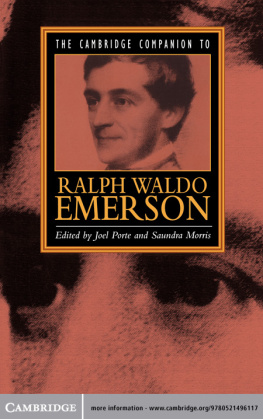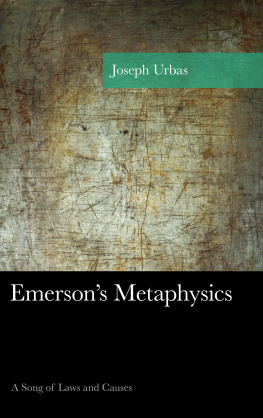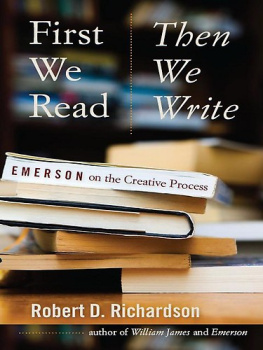EVOLUTION OF EXPRESSION
VOLUME I
* * *
CHARLES WESLEY EMERSON
*
Evolution of Expression
Volume I
From a 1905 edition
ISBN 978-1-62011-322-6
Duke Classics
2012 Duke Classics and its licensors. All rights reserved.
While every effort has been used to ensure the accuracy and reliability of the information contained in this edition, Duke Classics does not assume liability or responsibility for any errors or omissions in this book. Duke Classics does not accept responsibility for loss suffered as a result of reliance upon the accuracy or currency of information contained in this book.
Contents
*
*
TO MY STUDENTS
Whose need has been my inspiration and whoseunderstanding my rich reward, these volumes are affectionately
DEDICATED
Introduction
*
Teach me, then,
To fashion worlds in little, making form,
As God does, one with spirit,be the priest
Who makes God into bread to feed the world.
Richard Hovey.
The revised edition of the "Evolution of Expression" is issued inresponse to frequent requests from teachers and students for aformulation of those principles upon which natural methods in theteaching of expression are based. It is hoped that the briefexplanatory text introducing each chapter may aid teacher andpupil to avoid arbitrary standards and haphazard efforts,substituting in their place, psychological law. Growth inexpression is not a matter of chance; the teacher who understandsnature's laws and rests upon them, setting no limit to thepotentialities of his pupil, waits not in vain for results.
No printed text, however, can take the place of a discerningteacher. A knowledge of the philosophy of education in expressionavails little without the ability to create the genial atmosphereconducive to the development of the student. The teacher is thegardener, his servicehis full serviceis to surround the youngplant with favorable conditions of light and soil and atmosphere;then stand out of its way while it unfolds its full blossom andfinal fruitage.
The tendency of modern education is towards the discovery andperfection of methods. The thought of leading educators is turnedfrom the what to the how; to the development of systems ofprogressive steps through which the pupil may be led to arealization of himself. This trend is best shown in themultiplicity and excellence of recent pedagogical treatises and inthe appearance of carefully graded and progressive text-books. Theancients believed that their heroes were born of gods andgoddesses. They knew of no means by which the mind could bedeveloped to the compass of greatness. The ancient theory toaccount for greatness was preternatural birth; the modern theoryis evolution. To-day the interest of the child is awakened, hismind is aroused, and then led onward in regular steps.
The study of all forms of art, so far as methods are concerned,should be progressive. For correct guidance in our search for thebest methods, we must understand the order of the development ofthe human mind. A child, before he arrives at an age where he canbe taught definitely, is simply a little palpitating mass ofanimation. Soon he begins to show an attraction toward surroundingobjects. Next he begins to show a greater attraction for somethings than for others. His hands clutch at and retain certainobjects. He now enters the period of development where he makesselections, and thus is born the power of choice. Objects which,at first, appeared to him as a mass now begin to stand out clearlyone from another; to become more and more differentiated, whilethe child begins to separate and to compare. Thus the brain of thechild passes through the successive stages from simple animationto attraction, to selection or choice, to separation or analysis.This principle of evolution, operating along the same lines, isfound in the race as in the individual. In all man's work he hasbut recorded his own life or evolution. All history, allreligions, all governments, all forms of art bring their testimonyto this truth, and in each the scholar may find these successivestages of development.
In the age of Phidias the art of sculpture reached its maturity.No race and no people have ever surpassed the consummateachievements of that period. But this perfection was the result ofa process of evolution. There had been graduated steps, and thosesame steps must to-day be taken in the education of the artist.Art had passed into its second period before authentic Greekhistory began. The first stage was shown in that nation so justlycalled the "Mother of Arts and Sciences." In Egypt we findprobably the first real manifestations of mind in art forms. Theyare colossal exhibitions of energy, such as the Temple of Thebes,seven hundred feet in length, statues seventy feet tall, monumentsrearing their heads almost five hundred feet in air.
"Those temples, palaces, and piles stupendous
Of which the very ruins are tremendous."
To Assyria we turn in our search for the next step in the progressof art. Here we find the artists making melodramatic efforts toattract the attention and fascinate the mind with weird andincongruous shapes of mongrel brutes and hydraheaded monsters.
Finding art at this point, the Greeks, true to their raceinstinct, at once began to evolve from it higher forms. They soonawoke to the perception that beauty itself is the true principleof fascination. Reducing their new theory to practise, the Greekartists turned their attention to perfecting the details of theart they had borrowed. To works originally repellant from theirvery crudeness, they supplied finish and perfection of the parts.The ideal was still before them; the grotesque monsters mightfascinate the beholder, but, however skilfully executed, howeverperfected in finish, the impression produced was but transitory,and failed to satisfy the craving of the soul Beauty was found tobe the only abiding source of satisfaction. As the conceptions ofthe past no longer satisfied the criterion which their own mindshad embraced, the Greek artists sought in nature herself formodels of that beauty, which, when placed in art forms, should bea joy forever. The monsters of antiquity disappeared, and in theirplaces, came attempts to faithfully copy nature. To be sure, somespecimens of the art era from which the Greeks had just emergedappeared at much later periods of their history; but thesecreations, as in the case of the Centaur, were usuallyrepresentations of what were believed to be historical facts,rather than fantastic creations designed by the artist to startlethe beholder. The Greek still gratified his passion for beauty ofdetail, while he was pursuing his new-born purpose of copyingnature. It was not long before he found that nature, howeverskilfully copied, could be perfectly mirrored to the eye of thebeholder only when presented as she appears to the mind of man.This discovery budded and blossomed into the consummate flower oftrue art, the fourth or suggestive era, which reached its acme inthe work of Phidias and his contemporaries. Every creation was theexpression of some state of mind. Everything was made as itappeared to the eye of the poet, not as it might seem to the manof no sentiment. The impression of the poetic mind found itsexpression in art, and now the statues think, fear, hate, love.
The same general laws which have governed the rise of sculpture,underlie the evolution of all forms of art. It is the purpose ofthe present writing to hint at, rather than to trace, the fourstages of development in painting, music, and literature. Tofollow the steps of progress in painting is somewhat moredifficult than to trace the evolution of sculpture orarchitecture, on account of the perishable nature of thematerials. Music has unfolded with the unfolding of the humanmind, from the startling sounds of the savage,exhibitions ofpure energy,through efforts at fascination by the medium ofweird and unnatural combinations, and through attempts toreproduce natural sounds, ever upward till it breathes the veryspirit of nature in a Haydn or a Beethoven.








